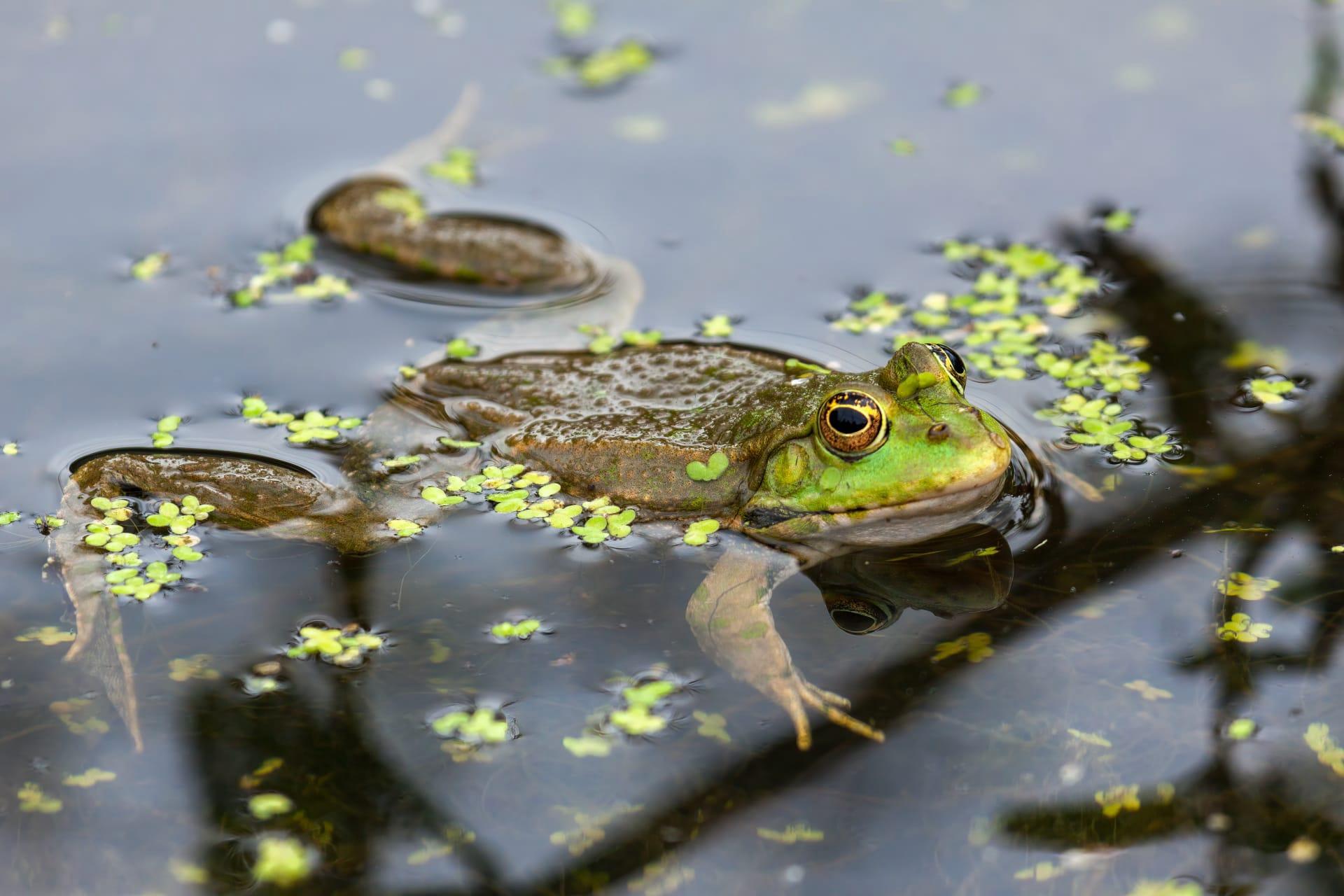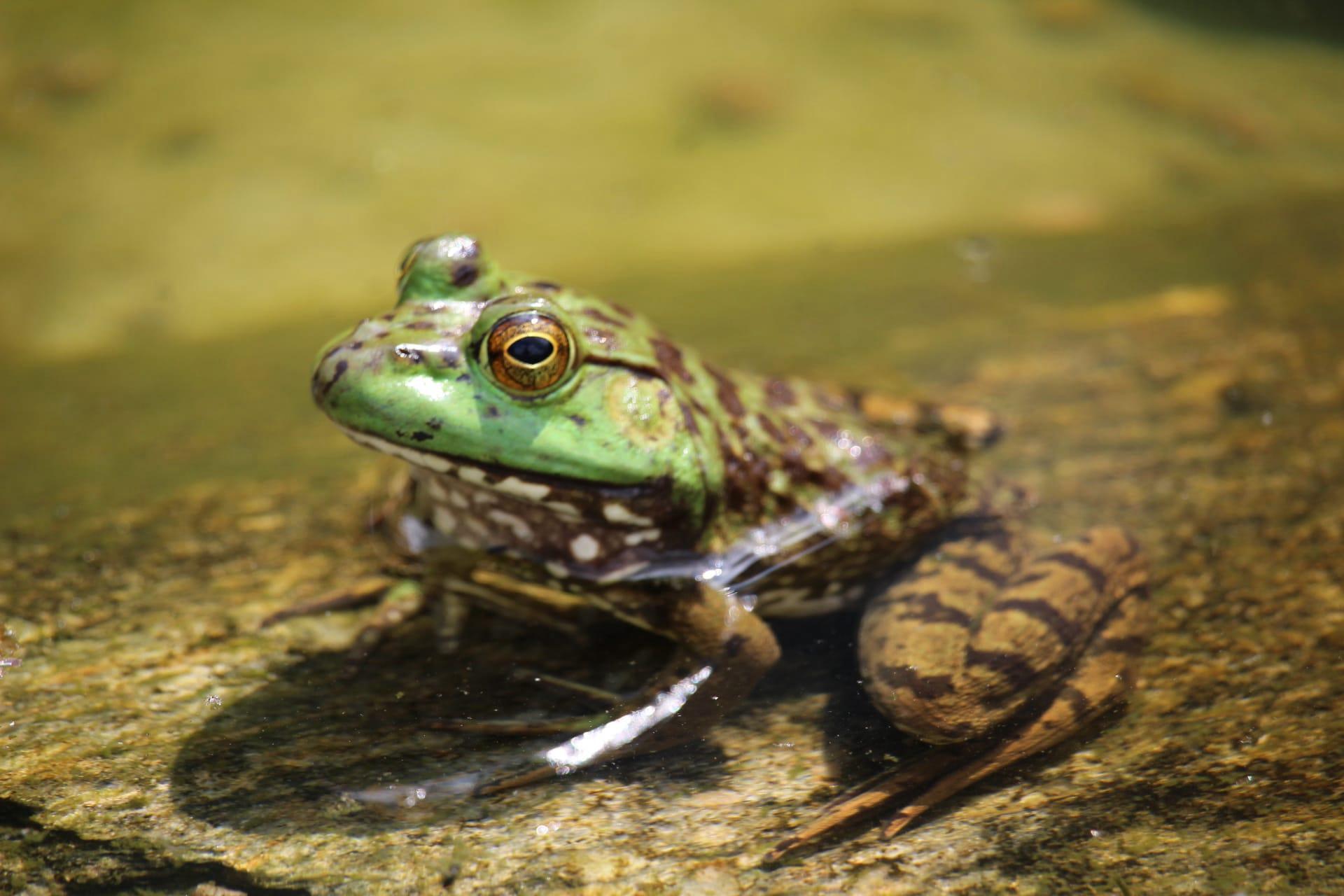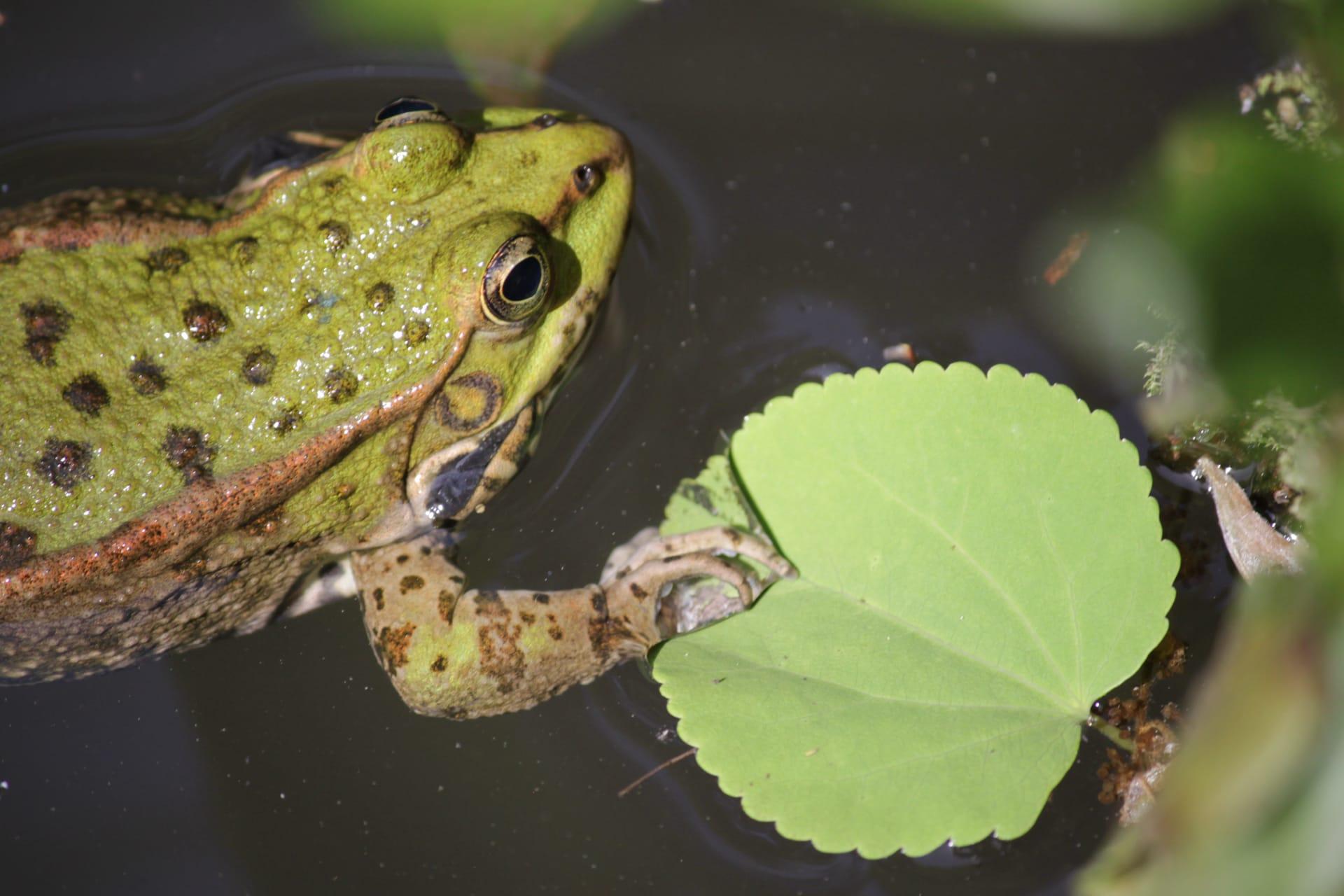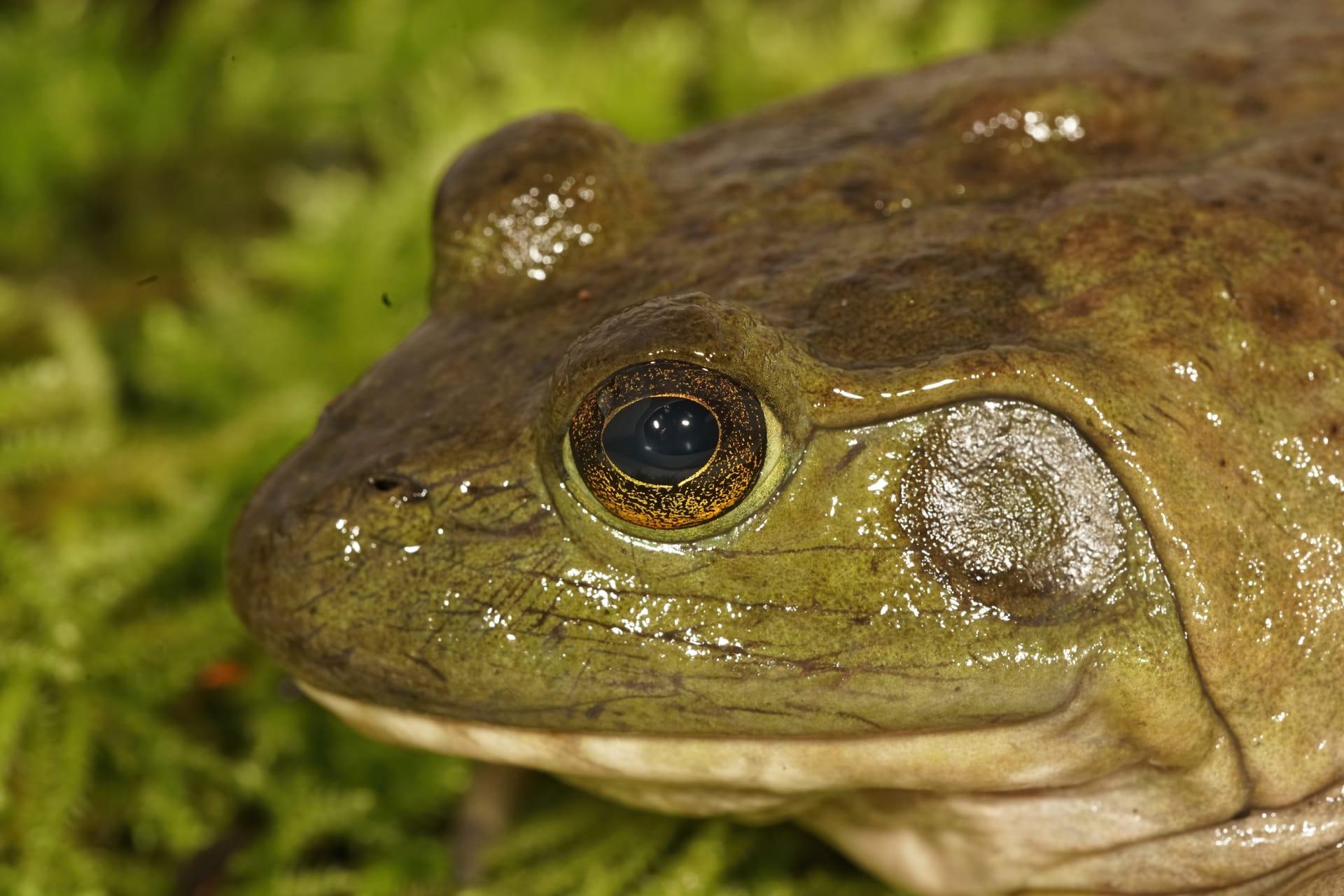American Bullfrog Characteristics
- Home /
- Mini Encyclopedia /
- Animal /
- American Bullfrog Characteristics
1
Meet the American Bullfrog, a fascinating amphibian known for its impressive size and distinctive features. These creatures can grow up to 8 inches in length, making them one of the largest frogs in North America. Their lifespan is equally remarkable, with some living up to 10 years in the wild. What's more intriguing is their skin color, varying from green to olive, often with dark bands or spots, providing excellent camouflage in their natural habitats.
Now, let's dive into the most special organ of the American Bullfrog: its eardrum, also known as the tympanum. This circular, membrane-like structure is located just behind the eyes and is crucial for their survival. It's not just for hearing; it plays a key role in their communication, especially during mating season. The tympanum's sensitivity allows bullfrogs to detect both airborne and waterborne sounds, giving them a remarkable ability to sense predators and prey alike.

2
Question: Why do American Bullfrogs croak so loudly?
Answer: The croaking of American Bullfrogs is not just a random noise; it's a vital part of their communication. Males use their deep, resonant croaks to attract females and establish territories. These croaks can be heard up to a quarter-mile away! The sound is produced by air passing over their vocal cords and then amplified by their vocal sacs. This mechanism allows them to produce a wide range of sounds, from deep roars to gentle chirps, depending on the context and what they're trying to communicate.

3
The American Bullfrog is known for its impressive jumping ability. They can leap up to 6 feet in a single bound, thanks to their strong, muscular legs. This incredible jumping skill is not just for show; it's crucial for escaping predators and catching prey.
When it comes to hunting, these frogs are opportunistic predators. They will eat almost anything they can overpower, including insects, small fish, other frogs, and even small birds and mice. Their hunting strategy is based on patience and surprise. They remain motionless, blend into their surroundings, and then strike swiftly with their sticky, extendable tongues to catch unsuspecting prey.

4
American Bullfrogs thrive in aquatic environments, particularly in freshwater ponds, lakes, and marshes. They prefer still or slow-moving water with abundant vegetation, which provides both food and cover from predators. Their adaptability to different aquatic habitats is a key factor in their widespread presence across North America.
Their reproduction process is quite unique. Mating typically occurs in late spring or early summer. Females lay thousands of eggs in shallow water, which hatch into tadpoles. These tadpoles undergo metamorphosis, transforming into adult frogs. This process can take up to two years, during which they are highly vulnerable to predators and environmental changes.

5
Book: "The Secret World of American Bullfrogs" by Dr. Emily Green, published in the USA in 2010. This book provides an in-depth look into the life of American Bullfrogs, exploring their habitat, behavior, and ecological impact. Dr. Green's extensive research and engaging writing style make this book a fascinating read for both science enthusiasts and casual readers.
Book: "Frog Songs: Unveiling the Mystery of the American Bullfrog" by Jonathan Fisher, published in Canada in 2015. Fisher delves into the acoustic communication of bullfrogs, shedding light on how and why these amphibians produce their distinctive sounds. The book combines scientific findings with captivating narratives, making it an informative and enjoyable resource for anyone interested in amphibian biology.